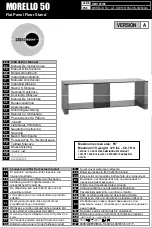
Figure 4
7.
Torque ½” lock nut to 12.5 ft/lbs (150 in/lbs). Check lock nut for any loose burrs and
remove as necessary. Set piston rod assembly aside.
8.
Reassemble base valve with the appropriate compression disks as determined in the
revalving instructions. Apply blue Loctite (242/243) to the retaining nut threads. Torque
retaining nut to 15 in/lbs. (See figure 4)
9.
Place the shock body in the vise, holding it by the lower mount.
10.
Pour ~1/4 cup of oil into the shock body.
11.
Gently insert the compression tube and gas bag into shock body, base valve first. Verify
that the base valve has seated into base of the shock body properly.
12.
IMPORTANT! Do not tear the gas bag or pinch it under the base valve.
13.
Fill shock body and compression tube with shock oil to just above (1/16”) the top of the
compression tube.
14.
Move compression tube around to free any trapped air bubbles.
15.
Insert the piston-rod assembly, with piston wrap, into compression tube.
16.
With the piston assembly submerged approximately 1”, tap shock rod eyelet with a soft
mallet. This opens the compression valve stack to release any air trapped inside the
piston.
17.
Slowly cycle the piston rod up and down while holding the compression tube down with
your fingers. Continue this process until no air is present in the oil.
18.
Use your fingers to hold the compression tube down and raise the shock shaft until the
piston is at the top of the compression tube.
19.
Hold shock shaft near the top of the compression tube and slide the gland into the
shock body. Oil should come up around the outside of the gland.
NOTE: Remember we are attempting to build a shock without any air
trapped inside.
20.
Keep shock fully extended. Push the closure nut o-ring into the outer groove of the
gland.
21.
Install and tighten the closure nut.
22.
Invert the shock and wipe off any oil over-flow.
23.
Stroke the shock and check for smooth operation. Rough or jerky movement indicates
that air is trapped inside - repeat the steps above.




























